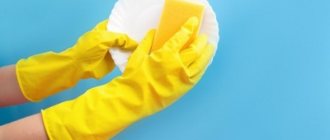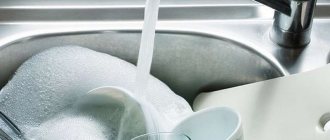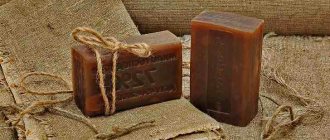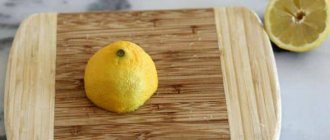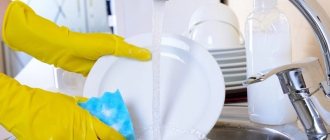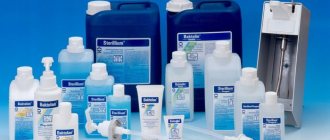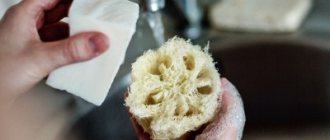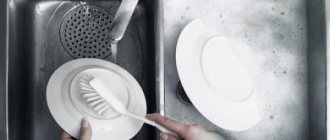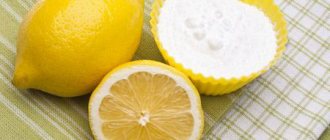Few people have thought about the versatility of such a home assistant as a dishwashing sponge. But various materials and shapes make it possible to increase the range of its applications. Different stains and surfaces require different sponges; each has its own shelf life, degree of absorption, and ability to foam. To understand this issue in more detail, consider the classification of sponges and all other related aspects.
Classification by material
Of course, there are not only foam sponges. The variety of materials allows you to match it to any surface to be cleaned.
Silicone
This new product appeared to conquer the market not so long ago. A silicone sponge for washing dishes, according to manufacturers, is much more convenient and practical than its foam counterparts. They are durable, do not absorb odor, are resistant to high temperatures, do not deform and do not leave behind rows of bacteria.
But in practice everything is not so rosy. The silicone sponge pleases with its bright colors and funny shapes; it really doesn’t need to be changed every 2 weeks, but the issue of convenience is very questionable. Firstly, it practically does not retain detergent on itself. Secondly, it slips in your hands, preventing you from thoroughly washing the dishes. Thirdly, you don’t even have to try to wash dried food with such a sponge.
- Durable;
- Resistant to bacteria and deformation;
- Price (taking into account the absence of the need for regular replacement).
- Convenience and quality of use;
- Increased detergent consumption.
Metal
This is a faithful comrade in the fight against dried and old stains. No one can wash away grease that has burned onto a pot or pan better than an iron sponge. Made from fine stainless steel shavings, due to its popularity it is never in short supply. You need to change a metal sponge for washing dishes quite often, since it crumbles with use, leaves rusty stains where it is stored, and small cuts on the skin of your hands.
Never use it to remove stains from Teflon, plastic or enamel cookware. It is intended only for cast iron and scratch-resistant products.
- Copes with old dirt and burnt fat;
- Easy to find on sale;
- Low price.
- Leaves scratches on most materials;
- Can injure the skin of the hands.
Foam rubber
The most popular and everyone's favorite sponge. The soft foam surface gently cleans dishes, foams well and absorbs water, and the second side is often equipped with a layer of abrasive additives. Suitable for all surfaces. The price varies widely and depends on the manufacturer, quality of materials, size.
Foam sponges for washing dishes must be changed every 1-2 weeks. Otherwise, bacteria and an unpleasant odor will settle on it, which will transfer to clean dishes.
- Variety of shapes, colors, prices;
- Universal;
- Foams well and absorbs liquids;
- The double-sided surface removes a variety of contaminants.
- It is unlikely to cope with burnt stains;
- Needs to be changed frequently.
Abrasive
Sponges made of hard materials: plastic, metal or wrapped in polypropylene thread. They cope with dirt with minimal effort, but, like metal ones, they are not suitable for all surfaces. They quickly lose their usefulness, especially plastic ones.
Abrasive sponges for washing dishes are often equipped with a handle to protect the skin of your hands from damage. It is better to take a closer look at such specimens.
- Acceptable price;
- Highly effective in combating persistent pollution;
- Plastic options are also suitable for delicate surfaces.
- They quickly become unusable;
- Metal abrasive models are only suitable for cast iron and baking sheets without a non-stick coating.
Pulp
Such sponges are, first of all, famous for their hypoallergenic and environmental properties. The porous structure absorbs moisture well and foams, and the antibacterial composition, which is often impregnated with cellulose sponges, does not allow pathogenic organisms to multiply.
They are used not only in washing dishes, but also in cleaning walls, tiles and bathrooms.
- Safety, saving cleaning agent;
- Cellulose copes well with unpleasant odors and stains on plumbing fixtures;
- You can change it no more than once a month.
- They absorb moisture strongly and must be dried thoroughly.
Plastic washcloths Practi Paclan
Chinese Practi Paclan washcloths are useful for working with surfaces for which contact with iron sponges is strictly contraindicated. With their help, you can carefully clean capricious Teflon frying pans, polished stainless steel sinks and acrylic shower trays.
The manufacturer does not promise miracles: it will not be possible to remove the hardened deposits of many months with a plastic washcloth. They are designed to remove light or pre-softened dirt.
What are the advantages of Practi Paclan plastic washcloths?:
► Delicate cleaning – soft polymer threads do not scratch surfaces sensitive to abrasives
► Durability – one package (3 pcs.) will last for at least six months.
► Soft, do not prick the skin.
Dish sponge sizes
Most often, the size of the sponge is adjusted to the average size of a human hand. This is done for ease of use. But you can often find very small sponges, for cleaning hard-to-reach places, and large ones, capable of covering a rather large area.
The shapes also differ from each other. The most common and popular sponge shape is rectangular. In addition to it, there are square, oval, profile with grip and curly. Oval ones are great for washing round surfaces: deep plates, bowls and cups. Profile ones with a grip have an increased thickness and a notch in the middle, making the sponge easier to grasp with your hands and also reducing the risk of ruining your manicure. Curly and square ones do not have a special purpose, but sometimes they look very unusual and attractive.
Dishwashing sponge holder
It's not entirely hygienic when the sponge just sits on the edge of the sink. For several reasons:
- the sink is not always clean, which means the surface of the sponge absorbs dirt;
- the sponge does not dry well;
- if it is metal, it may leave rusty stains on the sink.
To solve these problems, special stands for sponges for washing dishes were created in which you can store them. They are made from different materials:
- ceramics;
- plastic;
- glass;
- stainless steel.
The forms are also varied. On sale you can find standard cups or flat stands, shaped in the shape of fruits, vegetables, animals, you can find entire organizers for storing both sponges and detergent. A variety of colors will allow you to choose what will fit into the overall interior of the kitchen or bathroom.
When choosing such an accessory for your home, you should focus on both material and functionality. It is good if the sponge stand is equipped with a mesh or grate that allows liquid to drain from it into a special compartment or directly into the sink. Universal accessories, such as a dispenser for cleaning fluid and a recess for a sponge in one bottle, will save space.
The price of a sponge stand varies from 50 to 2000 rubles, depending on the quality of the material and purpose.
The secret of choosing the right one
Before you delve into the variety of brushes and sponges, it is important to understand your needs. Why, for example, does a housewife who primarily cooks in a multicooker with a non-stick coating need metal scrapers to remove a thick layer of fat from a cast-iron frying pan? Therefore, first of all, it is worth asking yourself a few questions:
- How many dishes do you have to wash daily? The answer to this question depends on many factors: how many people live in the apartment, whether all family members eat at home all the time, how many kitchen utensils are usually involved in the cooking process, how often you have to receive guests, etc.
- What kind of cookware is usually used, and what are the features of caring for it? Thus, Teflon and ceramics do not tolerate strong mechanical impact and abrasive substances, while cast iron products are resistant to such cleaning.
- What are the preferred cooking methods and favorite dishes of family members? Washing a pan after boiling or stewing vegetables usually does not require much effort, which cannot be said about cleaning the pan after cooking porridge, which often burns. Washing out a bowl of fruit salad is much easier than ridding a frying pan of grease after deep-frying potatoes.
If you often have to clean the pan from carbon deposits, you should think about buying a good sponge or brush.
Only after a thorough analysis of your needs, you can choose from the whole variety of sponges and brushes exactly what you really need, and not succumb to the temptation to make a purchase just because it’s a miracle thing. advertised by a practical hostess from YouTube. Now you can see what the manufacturers offer.
Sponge holder
Sponge holders exist, for the most part, in two types: stands with a suction cup and a handle.
The suction cup holder is attached to the tiles or sink wall, holding the sponge on a special stand. They differ from the stands described above in their small size and the presence of rubber suction cups.
A pen-shaped holder is more functional; you can attach a cleaning accessory to the holder itself and thus wash dishes without getting your hands dirty. These sponge holders are sometimes equipped with a detergent dispenser that dispenses directly onto the sponge directly from the handle.
The price range is again quite large, depending on the type and purpose of the holder: from 100 to 1000 rubles.
How often should it be changed?
The frequency of sponge replacement directly depends on the material. But, as a rule, the more often the better, in order to prevent bacteria and unpleasant odors from being absorbed.
| Sponge material | Replacement frequency |
| Foam rubber | Once a week or two |
| Metal | Depending on frequency of use. Usually once every 2-3 weeks to prevent chips from scattering and causing injury |
| Abrasive | From metal once every 3-4 weeks, from plastic once every 2-3 weeks |
| Pulp | Once a month (provided that it is well dried after each use) |
| Silicone | Once every 3-4 months (subject to regular heat treatment with hot water) |
Recommendations
Selecting and using washcloths for cleaning will be easier if you pay attention to the following tips from cleaning specialists:
- Sponges that have different uses should be stored separately from each other.
- A vinegar solution can be used to disinfect reusable sponges.
- Deformed, worn-out washcloths lose their functionality and require replacement.
Regardless of the material of the sponge, it is better to carry out cleaning with gloves. This requirement is especially important when using washcloths with abrasive surfaces, allergies, and the use of aggressive household chemicals.
Manufacturers and prices
When buying a sponge, pay attention to the manufacturer. Popular brands value their reputation and use only high-quality and safe raw materials. Prices for sponges for washing dishes vary greatly depending on the material, additional functionality and the presence of detergent impregnation. Let's consider the prices of standard sponges intended for washing dishes and various surfaces. The cost of one piece is calculated by dividing the price for the entire package by the number of pieces in it.
| Company manufacturer | Assortment supplied | Price for 1 piece |
| Violeta | Cellulose, foam rubber | From 12 rubles |
| Mistress | Cellulose, abrasive, foam rubber (including profile) | From 8.5 rubles |
| Paterra | Made from abrasive, metal and foam rubber (including profiles) | From 15 rubles |
| Lime | From foam rubber | From 5 rubles |
| MAXI | Made from foam rubber and abrasive | From 4.5 rubles |
| OKAZAKI | Made from cellulose and foam rubber | From 50 rubles |
| Cleaning sponge | Made from foam rubber and cellulose | From 42 rubles |
| Amway | From foam rubber | From 40 rubles |
| Clean | Made of metal, cellulose and foam rubber (including profiles) | From 7 rubles |
Silicone sponges are sold mainly in online stores, and their price starts from 100 rubles per piece.
What does it consist of?
The most common material for cleaning sponges is polyurethane foam or, in other words, foam rubber, which is 85% air. The reverse side of the product is represented by fiber - a material made of high-strength fibers. In addition to foam rubber and fiber, various additives are often added to the product material, which help to increase the wear resistance of foam rubber sponges. In addition, the washcloth can be made from stainless steel shavings, plastic, microfiber, bamboo and melamine.
Quality cellulose sponges contain viscose or natural wood fibers. Antibacterial components are also added to some high-quality washcloths.

